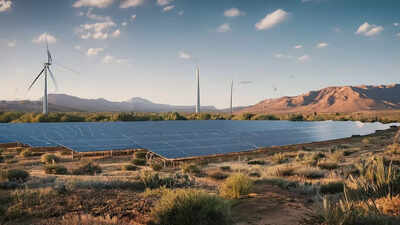5 years ahead of target, India gets 50% power from clean sources

NEW DELHI: Non-fossil fuel sources now make up half of India’s power generation capacity of 484.8 GW (gigawatt), a milestone the country has achieved five years ahead of the target set under its Nationally Determined Contributions (NDCs) committed in the Paris climate agreement.“In a world seeking climate solutions India is showing the way,” renewable energy minister Pralhad Joshi said in a post on X on Monday, crediting the progress to PM Modi’s stewardship of “Bharat’s green transformation towards a sustainable future”.Modi has been pushing clean energy since taking over country’s reins in 2014. In 2015, he gave the mantra of “India moving from megawatts (MW) to gigawatts (GW)” and raised clean energy target from 2,000 MW to 175 GW by 2022. In 2021, India upped the game at CO Glasgow climate meet by announcing a target of 500 GW renewable energy capacity by 2030.Subsequently, the government’s renewable energy policy focus shifted from merely raising solar or wind energy capacity to promoting “non-fossil fuel” sources, including large hydel projects that were excluded in the earlier clean energy discourse.This shift was driven by a commitment to energy security, climate action and ensuring sustainable economic growth. While renewable energy is a key part, the broader strategy encompasses other initiatives such as nuclear, green hydrogen, geothermal energy and emerging technologies.India’s total installed generation capacity stands at 484.8 GW as of June. Renewable energy capacity, including large hydel projects, is pegged at 234 GW and together with 8.7 GW of nuclear capacity make up a little more than 50% of total generation capacity. Thermal generation capacity stands at 242 GW.Despite rapid growth in solar capacity, the grid is still heavily dependent on coal to meet the evening peak, highlighting a missed opportunity to lower power sector emissions, global think-tank IEEFA said in a report on Tuesday.“Energy storage and demand-side management are essential to address this gap by deploying stored energy to address the evening peak and shifting part of the evening demand to daytime. These measures will not only enhance grid reliability but also reduce price volatility on the power exchanges,” it said.




